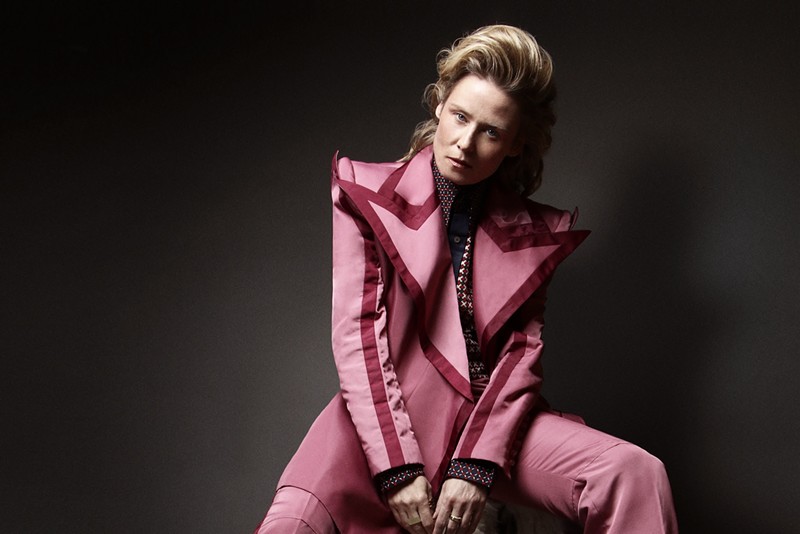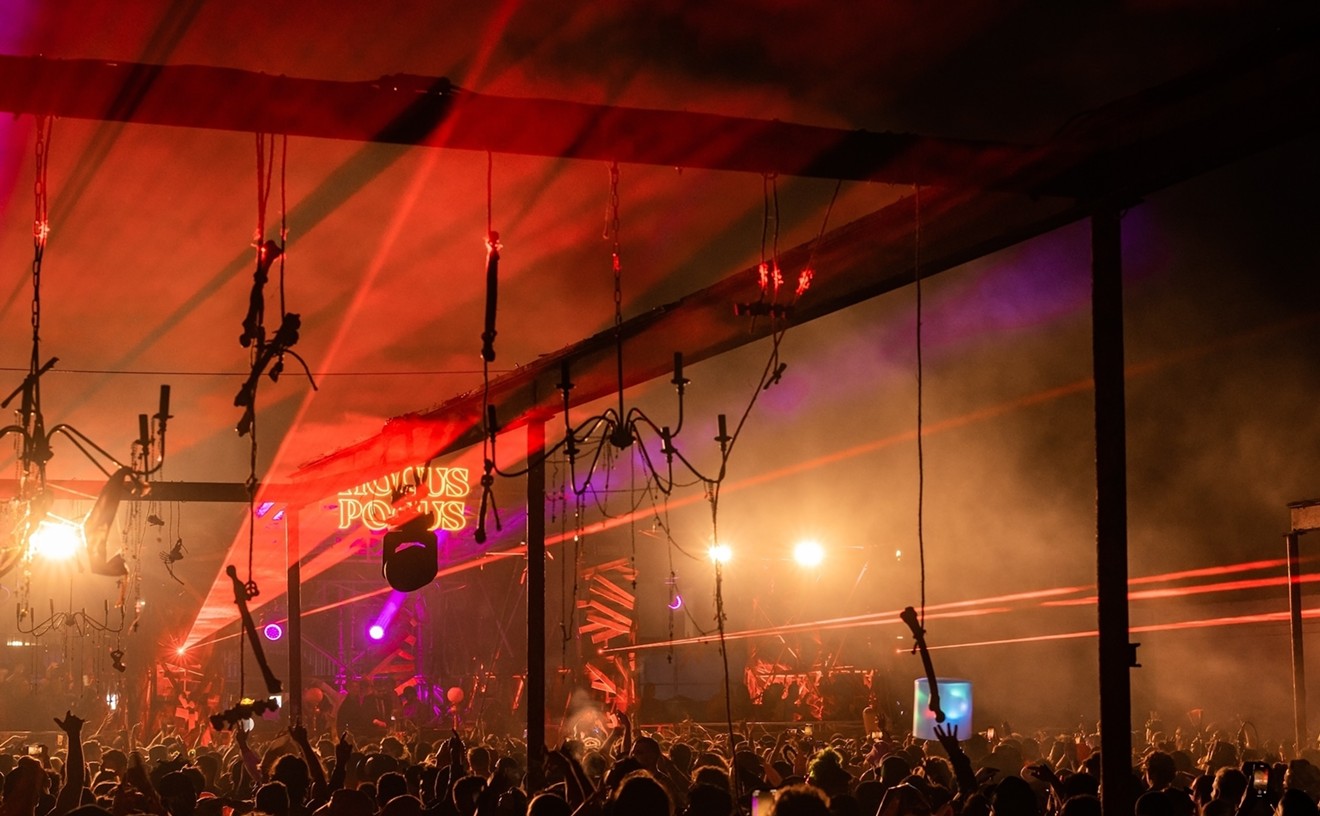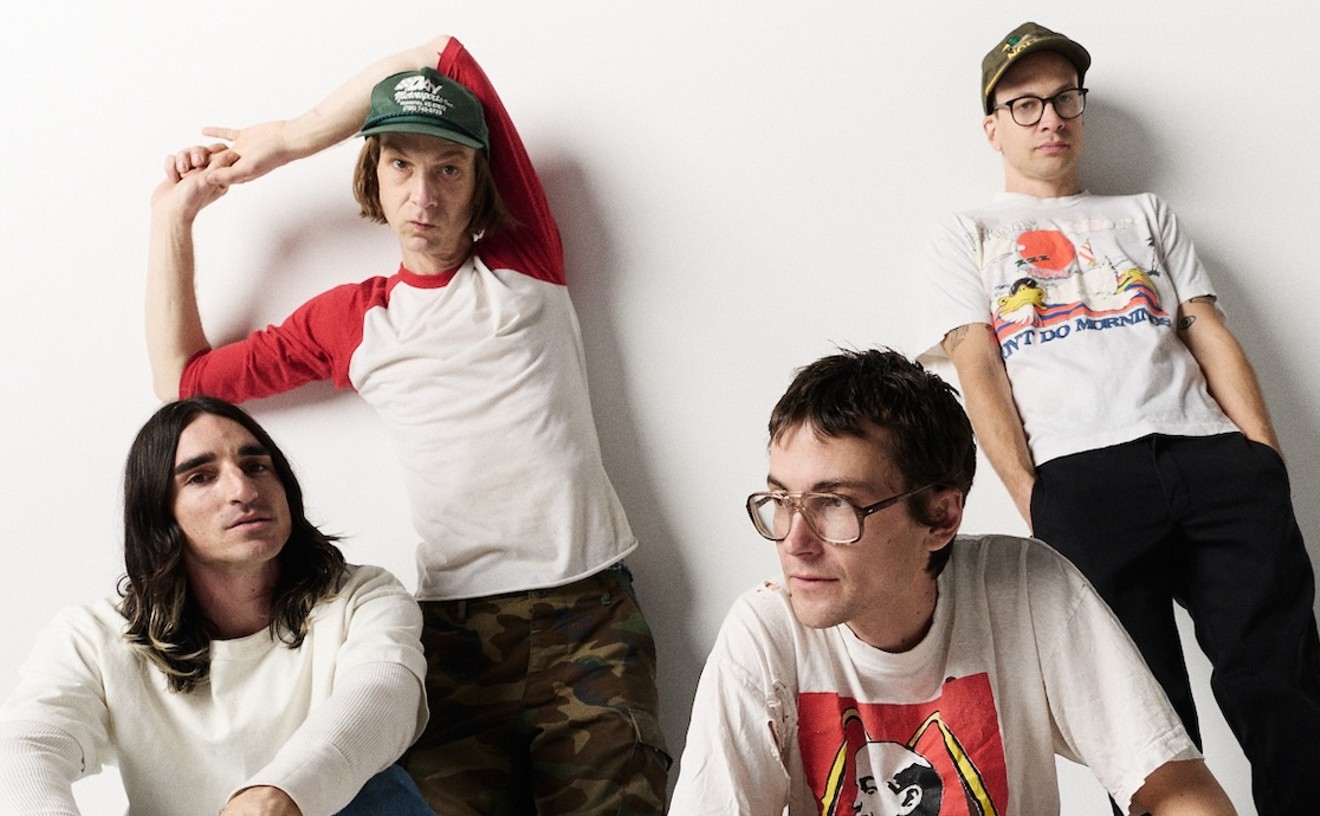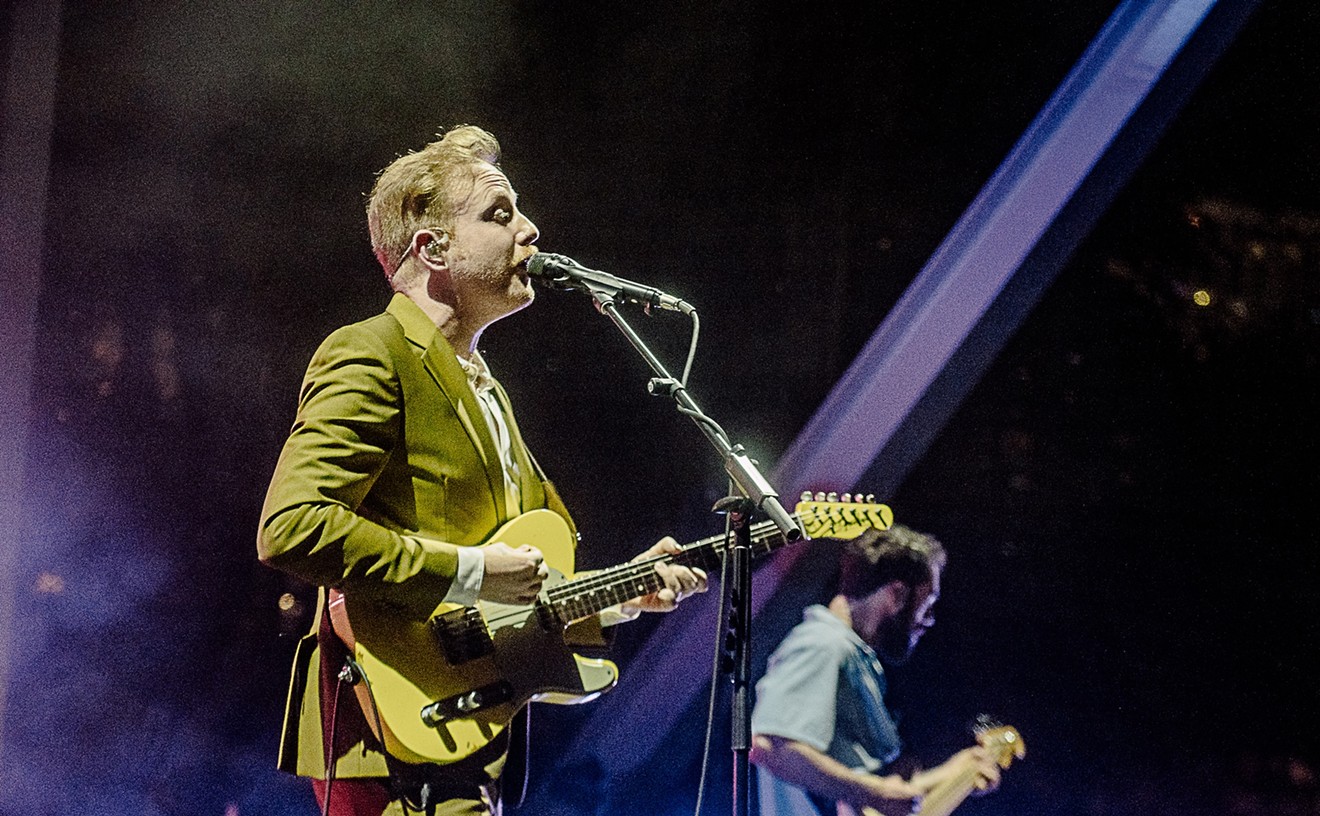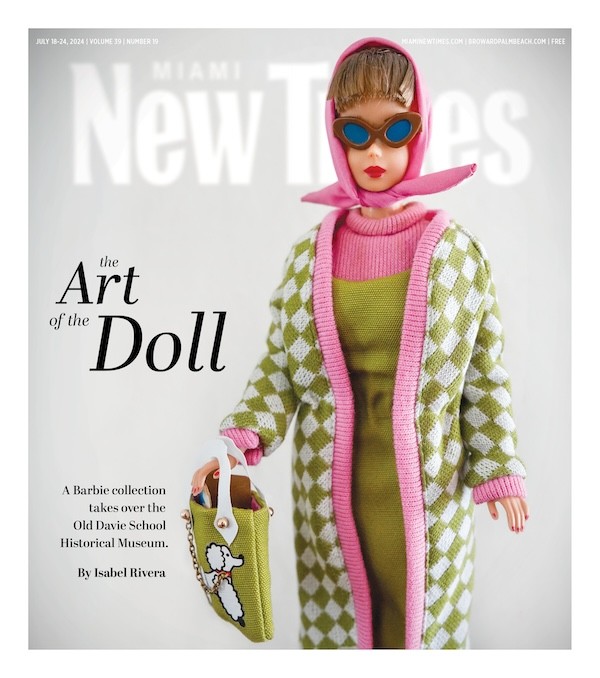She never intended to become a singer, yet growing up in a small Irish town raised by two artists imbued a sense of community and creative brilliance that signaled her career path.
"Among my parents and their friends and our extended family, everything seemed possible in a weird way, even though it was a small town and so on. Their intellectual kind of outlook was very wide and broad, and their artistic understanding was innate," Murphy tells New Times. "Everyone sang, everyone knew 50 songs, you know? When I look back on it, I'm just so grateful for it because I really was cultured in a certain kind of a way that was very natural."
Her accidental pathway into singing started when she met her former partner, Brydon, at a party. She walked around asking random people, "Do you like my tight sweater? See how it fits my body."
Partially to chat her up and partially struck with a creative spark, he suggested she return to his recording studio and lay that line down on a track. That night, they recorded "Tight Sweater," which also sparked their love affair.
"Maloko was a relationship first," Murphy says about the pair. "I think he wanted to be with me in the world. And he was sick of it. He was sick of professionalism to a degree. I think he was probably happy to work with someone who wasn't a professional singer or a professional this or professional that. He was getting a bit bogged down in all of that. And it was lighter to just play with me."
Surprised that a proper producer of Brydon's caliber would want to make music with such a fresh face was a shock to the system. He'd worked with Boy George, the Human League, and Art of Noise; she wasn't even sure what she was doing. However, she effortlessly slid into her immeasurable talent and quickly signed a major record deal.
Those early days provided glimpses of the influential solo artist she would eventually become. Her sultry vocals, ability to remain genre-fluid, and penchant for wild and elaborate costumes were all established then and have carried forward into her solo career. She went even more extravagant when she became a solo artist, designing bespoke wearable art pieces. Even before Gaga, Roisin Murphy defied the hum-drum suburban mall pop fashion of the early aughts, swapping it out for brash escapism.
"I do the styling myself. I do the creative direction myself across the whole project, the album artwork, and right through to things that you see on the stage, on the screen, and the way that the lights are.""I do the creative direction myself across the whole project, the album artwork, and right through to things that you see on the stage, on the screen, and the way that the lights are."
tweet this
The stage show of her current tour for her most recent album, Hit Parade, is more spectacular than ever. Murphy dances wildly amid a wash of flashing lights, quickly changing costumes from angular leather coats to skin-tight psychedelic body suits. It's quite a spectacle.
"I've not really wanted to take too much credit for that over the years," she modestly says when asked how she carries forward such a bold visual identity. "Because it hasn't been, you know, as brilliant as it can be, and it's something that's very hard. You know, lighting and staging, it's a very technical sort of art form, and I'm definitely not as good as I'd like to be at it, but I'm getting there."
She maintains that the real magic of her show is that "the main thrust of the visual is the fact that there is this band there that is interacting live, and we have to make the most of that in as simple a way as possible. So we use a lot of cameras. We use a big screen to amplify the liveness of it. We're trying to amplify this sense you get from seeing the interaction of players on stage. There's no other way of getting that feeling. And so I'm amplifying that all the time, visually, on stage."
Her band is instrumental to her success. "I've got the best gang of musicians I've ever had. I mean, they all play more than one instrument. They all understand the electronic aspects of what we're doing. Everything is being generated right there on the spot in front of your very eyes, you know, whether you understand that or not is another question."
Yet, even though she doesn't see herself carrying forward without her band, she still has an incredible reverence for DJ culture. When she first started her artistic journey, she says, "Maloko itself was almost like a reaction against house and club music, or just the strict rules of like four on the floor." She began to snake her way back to dance music in 1997 when she visited New York and immersed herself in the sounds of François K. and John Davis' Body & Soul weekly.
"It took going to America to really realize how I could love this thing forever. I've always been one who likes to go to clubs and get educated," she says. "DJs have been very important in my education of music, my understanding of music, my understanding of my own body and dancing. Some of the most important people in my life have actually been DJs."
The U.S. has played an essential role in her musical development for her entire career. Her frequent trips to work with American artists across the pond were "a bit of a holy grail."
"I'm no different than Van Morrison would have been about Black-American music, particularly in the sixties. And that's so when I went to America, and I stayed there for three months, I discovered that the house music that had been big since the late '80s in the UK; I discovered where it came from."
While New York may have held the key to her education in house music, Miami was at the epicenter of her career. Her 2007 album Overpowered featured several songs written in Miami, except ironically, her ode to the city, "Dear Miami."
"We broke out in Miami," she says, remembering the breakthrough success of "Sing It Back" in 1999. "Obviously, 'Sing it Back' could not be contained. Miami saved my ass in some way as well," explaining how the Boris Delugash remix was declared the biggest song of that year's Winter Music Conference by BBC Radio 1's Pete Tong.
"This is a magic remix. Okay. But [the label] couldn't get their heads around it." Her label favored the Todd Terry version, mainly because they'd spent the price of a small car commissioning it. "They put it out against my advice."
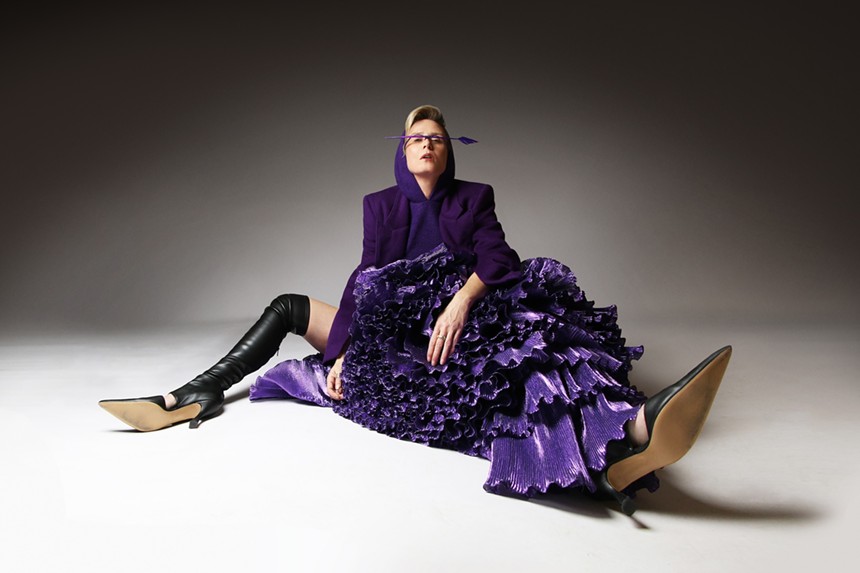
"DJs have been very important in my education of music, my understanding of music, my understanding of my own body and dancing," Murphy says.
Photo Nik Pate
Her staying power isn't just thanks to her sweltering vocals, mammoth stage presence, or her ability to be experimental and remain relevant. She owes a lot to a brood of dedicated fans. "I fucking love my audience. They're just bloody brilliant. They're just great people."
The true test of her audience's dedication came in 2023 when a Twitter user posted a screenshot from Murpy's personal Facebook page responding to comments made by anti-trans activist Graham Linehan. She criticized the use of puberty blockers for transgender youth calling the medications "fucked, absolutely desolate" and saying, "Little mixed-up kids are vulnerable and need to be protected; that's just true.""People were glad that I'd clarified that I wasn't going to become a crusader about anything in particular."
tweet this
She received significant backlash, especially from those who noted their disappointment in someone who was considered an LGBTQ icon. She quickly retracted the statement, acknowledging her comments were uninformed. Subsequently, she only saw a slight drop in ticket sales and escaped the calls for cancelation and the vitriol that many don't.
"I think maybe people were glad that I'd clarified that I wasn't going to become, you know, a crusader about anything in particular. I also think that maybe people are getting a bit weary of just burying artists. You know, they might just be thinking, Okay, well, what are we gonna do when we've buried everybody, you know? Because everybody's gonna have opinions at some point in time that don't ring across the spectrum, you know, as perfect opinions. Everybody's going to make statements that aren't very well thought through."
"I can't possibly tell you how delightful it is to know as an artist that my audience isn't super judgmental, hyper-intense. They don't expect me to act like a doll either, to kind of be something they can just play with and put words into her mouth and dress, put on the stage, and ask her to turn around. They don't want that from me."
Róisín Murphy. With Dreamcastmoe. 8:30 p.m. Saturday, June 15, at the Fillmore Miami Beach, 1700 Washington Ave., Miami Beach; 305-673-7300; fillmoremb.com. Tickets cost $56.50 to $91.45 via livenation.com.

